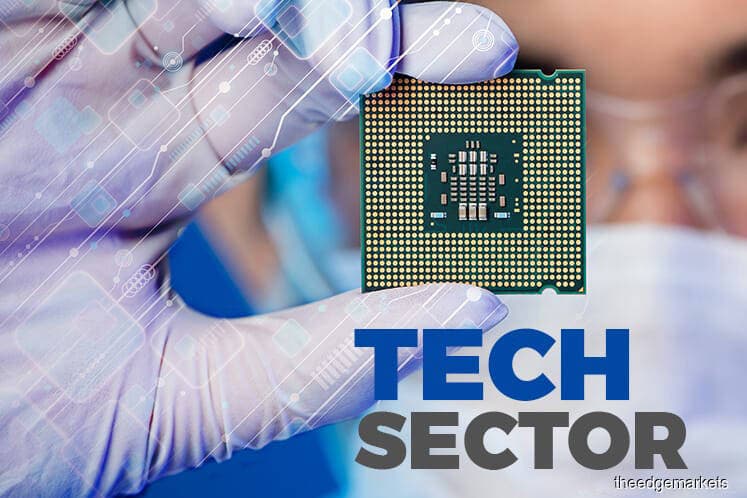
This article first appeared in The Edge Financial Daily on February 8, 2018
Technology sector
Maintain neutral: Technology sector’s annual sales surpassed US$400 billion (RM1.56 trillion) mark. Worldwide sales of semiconductor products for the month of December 2017 expanded by +22.5% year-on-year (y-o-y) to US$38 billion, another new height in monthly sales. The pace of sales growth had been hovering at around +20% y-o-y for the previous nine months since April 2017. Cumulatively, full-year 2017 sales climbed by +21.6% y-o-y to US$412.2 billion, which slightly surpassed the World Semiconductor Trade Statistics’ (WSTS) 2017 sales expectations of US$408.7 billion. This is the industry’s highest annual sales.
Double-digit sales growth was observed across all regions and almost all major product categories. Of all the product segments, the memory segment grew at the fastest pace at +61.5% y-o-y to US$124 billion. This accounted for 30% of total annual sales. The increase in demand of memory products was driven by the sales of dynamic random access memory (+76.8% y-o-y) and NAND flash products (+47.5% y-o-y). The logic and micro-ICs segments were the other two top performers. Regionally, the Americas region grew at the fastest pace of +35% y-o-y compared with other regions. All the other regions posted a sales growth of between +13.3% y-o-y and +22.2% y-o-y.
Capital spending for equipment ended the year on a high note. The North America-based manufacturers of semiconductor equipment posted December 2017 billings of US$2.4 billion, the highest monthly billings for the year. This represented an increase of +27.7% y-o-y compared with December 2016 billings of US$1.9 billion. On a sequential basis, the billings were +16.3% month-on-month higher than November 2017’s US$2.1 billion. For full-year 2017, the equipment spending increased by more than +40% y-o-y in view of the heavy demand for memory products. We expect equipment spending to trend higher, albeit at a slower pace, to be supported by spending on wafer fabrication plants (fab) construction and fab equipment in China, South Korea, and Taiwan. Nonetheless, we do not discount the possibility that the growth could turn negative should the end-user demand came in weaker than expected.
The worldwide sales of semiconductor do not display signs off cooling, although the growth rate may trend lower mainly due to the high base effect. As expected, 2017 sales came slightly better than expected. Moving forward, the annual growth rate is expected to taper off to single digit in 2018 according to WSTS. Nonetheless, we expect demand for semiconductor products to remain robust, driven by new smartphone line-up, expected recovery in the tablet market, and stable demand from the automotive industry. Capital spending will continue to grow, albeit at a slower pace. We view that this could negatively impact the dividend payout ratio. Given the impressive share-price performance in 2017, we view that most of the semiconductor companies under our coverage do not trade at attractive valuations at this juncture. All factors considered, we are maintaining our “neutral” recommendation on the sector. Our top pick for the sector resides with Unisem (M) Bhd (buy, target price: RM4.58) due to its attractive valuation, Batam’s operation to turn profitable, and new order wins. — MIDF Research, Feb 7